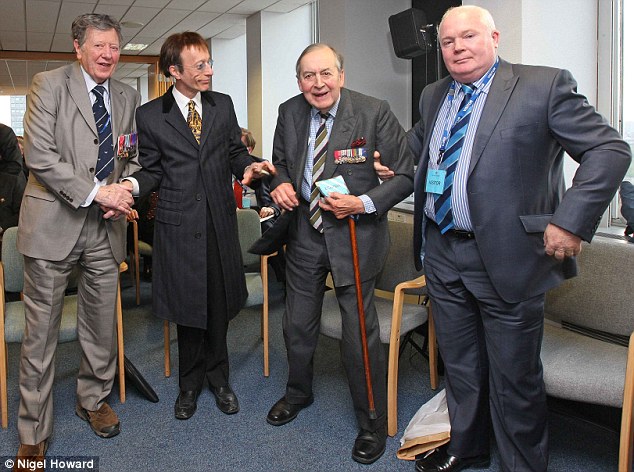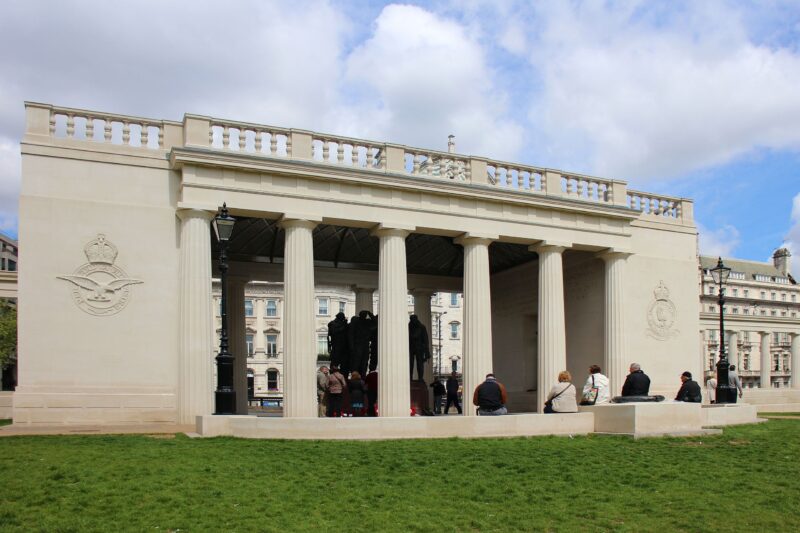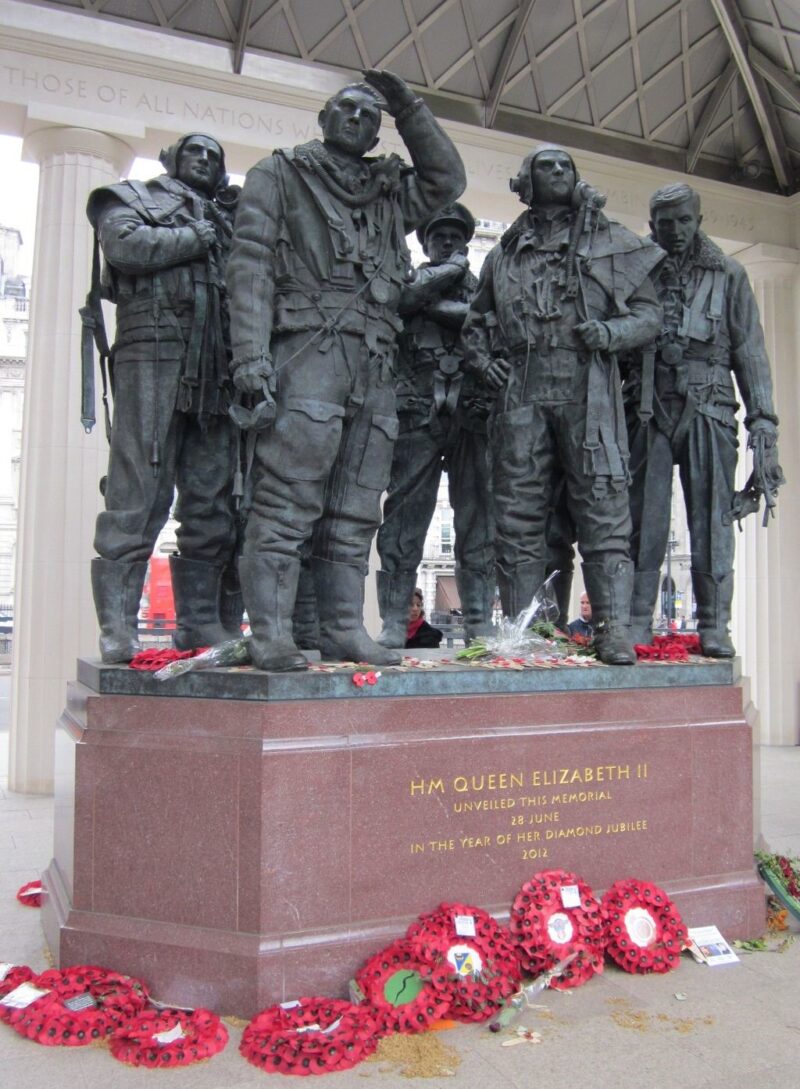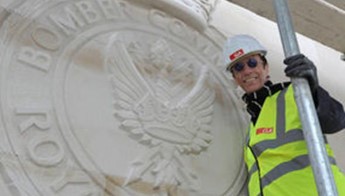Stories
Stories
Robin Gibb and the Bomber Command Memorial
Despite the efforts of many volunteers to have a Bomber Command Memorial built, the lack of political will to support the concept, both in planning and financial commitments meant the project struggled to gain traction. Help appeared from an unlikely source, Robin Gibb, the British singer, songwriter and record producer, who had gained worldwide fame as a member of the Bee Gees pop group. Mary Bowers told the remarkable story in a profile of Gibb published in The Times, August 2010.
Robin Gibb inspecting the Bomber Command Memorial during construction.
(Credit: Express)
What has been occupying Gibb’s thoughts more and more lately is his personal crusade — to achieve the building of a national memorial to the members of RAF Bomber Command who gave their lives during the last war.
The mission began three years ago when Gibb happened to meet former warrant officer Douglas Radcliffe, secretary of the Bomber Command Association, at the Ivor Novello awards. The chance encounter with the 86-year-old RAF veteran proved to be a fateful one:
Radcliffe explained that Bomber Command was the only Allied Forces contingent not to be commemorated with an official monument: Gibb decided that he was going to change that.
I loved talking to this guy,” says Gibb. “I came out of the door and saw this monument for animals. And I thought, ‘Where is the monument to the 55,000 young people in Bomber Command who sacrificed their lives? Of all the military wings, they lost the most.”
After a long and bitter battle with Westminster Council, the pop star and the veterans finally won planning permission for their monument.

The late Robin Gibb (2nd L) celebrate with veterans and fellow campaigner Jim Dooley (R) after Westminster City Council granted a planning application for the Bomber Command Memorial.
(Credit: Nigel Howard / Daily Mail).
Gibb, 60, is hardly the sort of campaigner you would normally associate with historical military memorials. So why did he back the memorial effort?
“It’s just something I feel strongly about. I wasn’t even alive when these guys did what they did but I know they deserve a monument to their sacrifice. And I’ve had the sanctification of David Cameron and Nick Clegg, and even Gordon Brown, on this. The fact is, nobody else had taken it on until I came along.”
Meanwhile, in a booth at the back of the Running Horse Tavern in the basement of the RAF Club in Piccadilly, Douglas Radcliffe MBE sips a pint and enjoys an omelette and chips for lunch. “I must admit I didn’t know him,” he says of Gibb. “I’m not a pop fan.”
The campaign has drawn them together, though, and the veterans have even been invited to a party at Gibb’s home. “We see him quite often,” chimes in former rear gunner Harry Irons. “He used to do a lot of big shows in America for the US Air Force, and he wanted to know where the memorial was in England.”
There wasn’t one, of course — an omission that still rankles with the veterans. “We thought we were doing our best at winning the war,” says Alf Huberman, who flew with the Pathfinders, the elite squadrons that marked bombing targets with flares.
It was only in 2006 that Bomber Command even had a humble plaque engraved in its honour, at Lincoln Cathedral. The veterans feel that “bad PR” contributed strongly to the delay: the bombing of Dresden was widely regarded with hindsight as an atrocity, although it is often forgotten that Bomber Command itself sustained terrible losses.
For Gibb’s help, all are grateful. “He has made himself au fait with Bomber Command,” says Irons. “We are full of admiration for him. If he hadn’t been there, we would have continued without any memorial.”
Sadly, Robin Gibb did not live to see the unveiling of the Bomber Command Memorial, passing away, after a long battle with cancer, on 20 May 2012, little more than a month before it opened. His contribution to ensure the memorial was built should never be forgotten.

The Bomber Command Memorial, situated in London’s Green Park was designed by Liam O’Connor and is built in Portland stone.

The Bomber Command Memorial features a 2.7-metre-high sculpture of seven aircrew in bronze.
